Yamaha has been on a roll with its MT range, and now has entrants from 320cc in its sensational value MT-03 right through to its imposing litre-fired MT-10 which is evidently in such hot demand globally that we’re unlikely to get an evaluation ride, ever. Shame that, as MTs of some description have taken our BOTY award two years running.
Meantime, into the hot LAMS area fires another new entrant, the XSR700 based on MT-07 mechanicals but this one has more of a heritage slant, it’s XS moniker harking back to the 1970s when the XS650 was an iconic thing. I remember those days, and to my mind the XS650 looked good and sounded righteous but it had a frame that was a bit rubbery and unconvincing compared with the Triumph competition and the RD350s of the era ran circles around it. So iconic is perhaps not quite the word I’d have used to describe the XS650; better XS models came along later.
The heritage apect of the XSR doesn’t really relate to the XS650 but rather the naked bikes of the time. The lower half is MT-07, while the upper part features retro aspects, like the prominent rounded headlight, and a similar but smaller vintage style tail light that illuminates with the intensity only LEDs can manage. There’s also a single round digital instrument and a raft of other styling aspects displaying the circular motif. We like the two-tone leather and suede seat in brown and black hues that doesn’t clash, surprisingly, with the matt silver body colouring of our example.
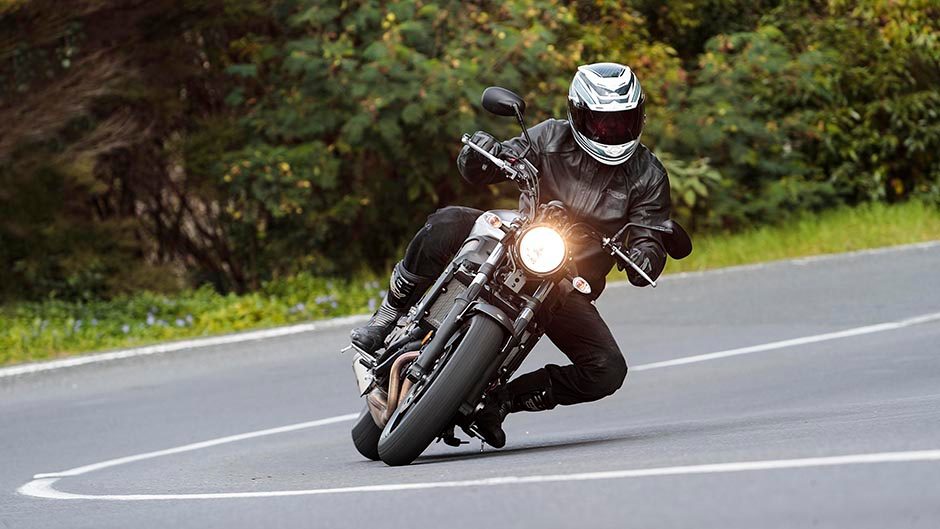
Quite a fair amount of aluminium bling is evident too, and the tank coverings are finished in polished matt aluminium which apparently develops something of a patina over time. These you can change out if you want to alter the appearance of your XSR, or if you ding the tank. Prices for the covers start at $695, including GST. Customisation options are almost endless, including flyscreens, exhausts, billet bits, you name it.
While most aspects of the bike look fine, the square-rigged radiator doesn’t quite gel in this setting; it would have looked better had it been less conspicuous because 1970s bikes were largely air cooled, like the XS650. For all that, the XSR looks interesting, and in Australia is being marketed to ‘hipsters’, a reference to Yamaha’s Star brand, one that has recently become a historic moniker itself. Yamaha describes the bike as ‘heritage without the hassle’.
Beneath the cosmetic additions (which are responsible for the cost increase over the base bike) is the MT-07 LAMs machine, essentially unchanged, and that’s appropriate for what was great two years ago remains as ab-fab now. The XSR is rather astounding value at $12,699, competing with more expensive machinery like Triumph’s modern classic Street Twin and Ducati’s Scrambler range. The interesting thing about its rivals is that neither is a LAMS machine, so learners cannot apply.
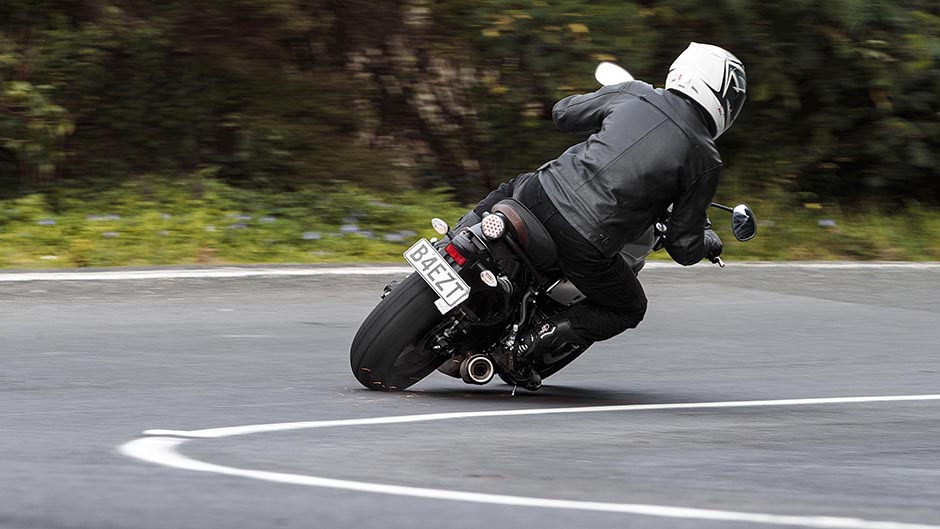
Does that put the XSR700 at any particular disadvantage? Well no, not really, because the Yamaha is amongst the lightest of the middleweight brigade. At 186kg brimmed it feels easy to manoeuvre around, the effect enhanced by wide handlebars and a generous lock. It’s one of the simplest bikes to U-turn I’ve ever ridden, with a short wheelbase and swingarm contributing as much as the absence of bulk and weight.
And it goes well too. It was and still is amongst the quickest of the LAMS machines, hitting the metric tonne in under five seconds and an overtake is done and dusted in 3.5sec, best in fourth gear. Only the Street Triple LAMS machine is quicker. The XSR’s turn of pace puts it right on the rear wheel of the Street Twin, and it’s not far behind the Scrambler either, both with significantly more capacity.
Despite the heritage style it’s a hoon at heart. Most LAMS machinery hasn’t enough in the way of grunt to elevate the front wheel. Exceptions are the new SV650 (slow speeds, first gear only) and the aforementioned LAMS Street Triple machine (stronger but still restricted to first gear wheelies). By contrast the XSR700 easily hoiks the front wheel to the balance point in second gear. It’s that combination of lightweight design, and power right at the LAMS limit without sacrificing torque that makes it as much of a joy to pilot as the MT-07. And that’s also a riot. Learners will genuinely discover good chassis design and impeccable balance with either of these machines.
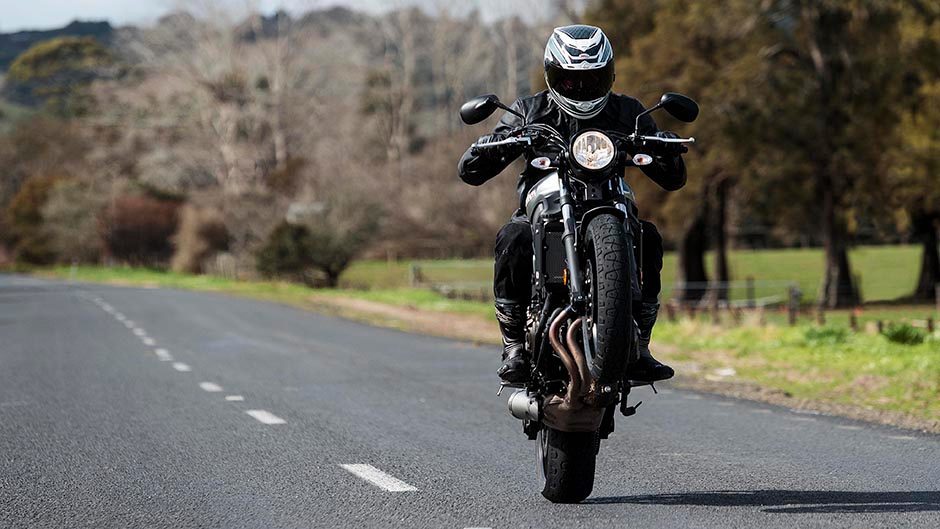
Adding to learner ease is the forthcoming nature of the engine output. The wee 655cc engine will spin to over 10,000rpm but there’s seldom the need, as torque peaks at 4000rpm, an advantage of the 270-degree crank throws. Best power resides around 8000rpm but for most riding 4000-6000rpm is plenty.
Performance is superb, being quick enough to excite but not so fast as to be a real nuisance to the rider or public. Tall gearing has the XSR ticking over around 4000rpm at an indicated 100, and 4500rpm at 110 where it is still barely legal (103km/h measured). And that’s right in the meat of the torque zone. The stubby little exhaust makes a pleasant enough, if muted, noise. We’d imagine many would want to make the little dog bark louder.
The gearbox and clutch are sweet; there’s lightweight and short sharp action for the former, and the latter is strong and has a distinct, easily detected bite point, helping with quick getaways and other shenanigans. Brakes are decent too, ABS imbuing added confidence for learner and experienced riders alike.
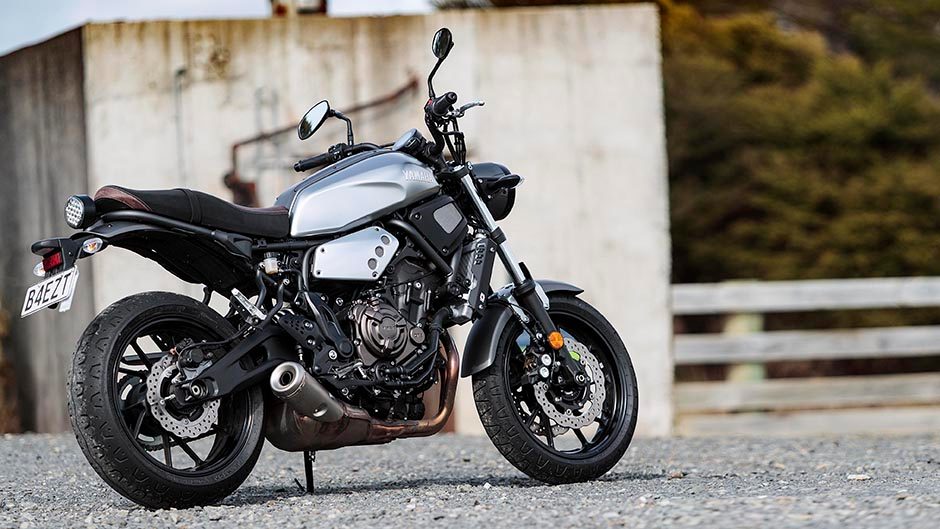
A more natural riding position you couldn’t imagine, apart perhaps from the initially wider than expected bar width. Seat comfort? It feels as good as it looks, and the bar-seat-footpeg triangle isn’t too squished for taller riders.
All that, while good, isn’t the highlight of the ride though. The way this turns and burns is just amazing for a LAMS machine. Look at where you want to be, and seemingly the machine makes it so. The light bar pressure and steering precision are something else. Forks are a touch soft, diving under a fist full of brake, but ride comfort is great, especially in urban environs.
On the gorgeous Pirelli Phantom retro rubber this is amongst the easiest of machines to go scratching on, the long footpeg feelers easily touching down and giving the rider some sense of achievement without encountering the outer limits of grip.
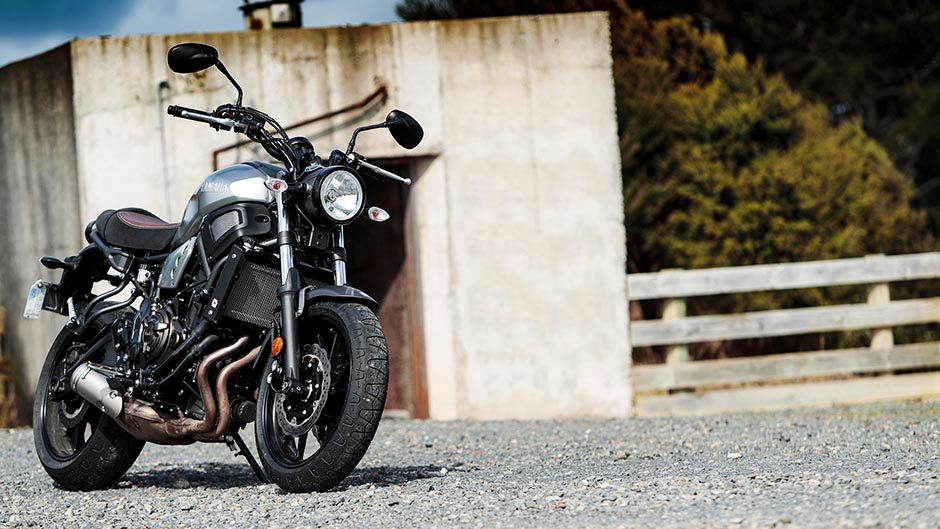
If you really like the look, and feel as though 52bhp isn’t going to quite do it for you, there’s always the 850cc three-cylinder XSR900 for $1800 more. That might look similar but is a different kettle of fish. Meantime, you could do worse than the $12k MT-07 HO, the high output version of the regular LAMS machine. That’s a right larrikin.
Yamaha, it would appear, have their middleweight bases covered rather nicely at present. If it’s something more in the touring and adventure line you’re after, you probably won’t have to wait long for a Tracer 700 is sure to be coming here in the near future.
| Model | Yamaha XSR700 | Price | $12,699 |
| Engine | 655cc, liquid-cooled, fuel injected, IL2, 39kW/58Nm | Drivetrain | 6-speed, chain final drive |
| 0-100km/h | 4.78sec | 100-0km/h | 41.09m |
| 80-120km/h | 3.62sec (103m) | Weight | 186kg |


